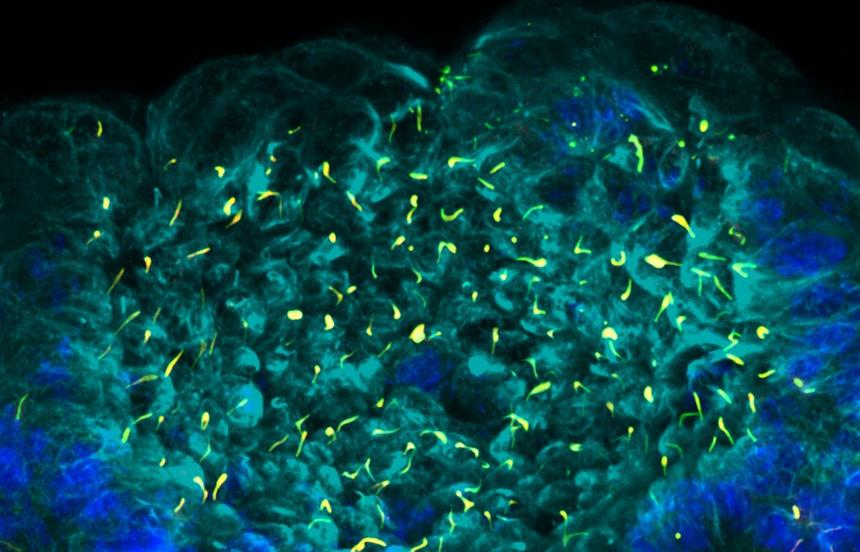
Primary cilia in the mouse embryonic node expressing a ratiometric calcium sensor
Embyronic Node
Primary cilia and calcium signaling controlling asymmetric gene expression: What is the common link between development and disease?
An essential key player in left-right patterning are primary cilia, hair-like structure protruding from the plasma membrane of most mammalian cells and believed to act much like an antenna to sense extracellular signals. The ciliary plasma membrane is enriched with signaling complexes such as G-protein coupled receptors and Polycystin TRP ion channels decorated with extracellular cell adhesion domains. Mutations in proteins affecting primary cilia function or ciliary calcium signaling lead to a variety of severe human diseases summarized as ciliopathies, including congenital heart disease and autosomal dominant polycystic kidney disease (ADPKD), obesity and mental retardation.
Despite the strong genetic evidence for the importance of primary cilia and ciliary Ca2+ signaling, we are still lacking a mechanistic understanding of primary cilia function.
We study two fundamental problems in cilia biology using novel in vivo approaches I recently developed:
- How do primary cilia determine L-R patterning of mammalian embryos and are these fundamental principles operant to other cell systems?
- How do primary cilia utilize calcium signaling in their function as antennas controlling gene transcription?
We are uing the mouse embryonic node as a model system to address these questions: it serves as an excellent but largely underappreciated model system to study primary cilia signaling in vivo, in addition to its fundamental role in developmental biology.
 University of California San Francisco
University of California San Francisco 